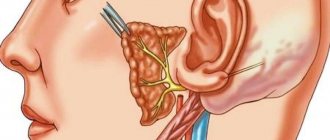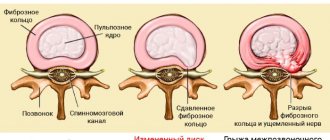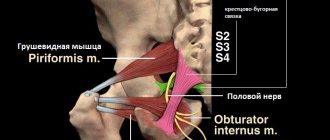Ear pain - mild or intense, shooting or aching - is a symptom that can indicate both a disease of the hearing organ and pathological processes occurring in nearby organs and tissues. According to statistics, otitis media is the most common cause of ear pain. However, the diversity of its forms and many other diseases with similar symptoms require accurate diagnosis and different treatment approaches. To establish the true causes of ear pain, it is necessary to be examined by an otolaryngologist, and sometimes by a neurologist, dentist, and even a cardiologist.
At CELT you can consult an otorhinolaryngologist.
- Initial consultation – 3,000
- Repeated consultation – 2,000
Make an appointment
Otitis externa
Most often, inflammation of the outer ear is bacterial in nature.
The causes of infection may be:
- trauma to the external auditory canal, for example, from a sharp or blunt object, or from a hearing aid;
- skin defects due to eczema, psoriasis, diabetes and other diseases;
- too thorough removal of earwax, which creates an acidic environment that prevents the growth of microbes;
- frequent entry of water into the outer ear (“swimmer’s disease”).
Symptoms of external otitis:
- acute ear pain, aggravated by pressing on the tragus or pulling the earlobe;
- possible itching and a feeling of “stuffiness” in the ear;
- discharge of a purulent or bloody nature, sometimes having an unpleasant odor;
- examination reveals swelling and hyperemia of the external auditory canal;
- possible hearing loss;
- enlargement and tenderness of the lymph nodes in the neck and behind the ear on the affected side.
The course of the disease may be complicated by a perforation of the eardrum, which cannot be determined without a visit to an ENT specialist.
External otitis of fungal origin is a common phenomenon, usually occurring in patients with low immune status or due to long-term use of antibacterial drops. It is characterized by severe itching, the formation of crusts, profuse thick discharge and the absence of a therapeutic effect from the use of antibiotics.
Separately, it is worth noting the localization of a boil on the skin of the external auditory canal or inflammation of the atheroma. The clinical picture is similar to otitis externa, but upon examination there is a more localized focus of inflammation with an opening from which pus and blood can be discharged.
How do symptoms of acoustic neuritis occur? How does the disease progress?
In the sudden form of the disease, hearing loss increases very quickly - within 12 hours. In this case, hearing decreases very strongly, right up to complete deafness. The disorder usually occurs on only one side—right or left. With a sudden form of hearing loss, hearing often disappears during sleep, which can cause a person to wake up. There is a feeling as if “the telephone wire has broken.” It is believed that most often this condition is caused by circulatory disorders in the inner ear, as well as viral infections: herpes, mumps, measles.
If similar manifestations begin to bother you, do not hesitate to visit a doctor. The medical center International Clinic Medica24 employs experienced neurologists and ENT doctors; we can undergo all types of diagnostics using modern equipment.
Unexpected deafness can be very frightening, but in about half of patients this form of the disease goes away on its own in the coming days.
If symptoms increase over the course of a day or longer, this form of auditory neuritis is called acute. If the disease is not treated, over time its course becomes subacute and chronic.
In addition to hearing loss, symptoms such as dizziness, nausea and vomiting, and impaired balance may be bothersome. This indicates damage to the vestibular nerve, which, together with the auditory nerve, is part of the vestibular-cochlear nerve.
Take care of yourself, book a consultation now
Message sent!
expect a call, we will contact you shortly
Otitis media
The middle ear communicates with the nasopharynx through the Eustachian tube, through which infection can penetrate from the upper respiratory tract due to acute respiratory viral infections, influenza, sore throat, rhinitis, sinusitis and other diseases. Children are especially often affected because their Eustachian tube is short and wide, which makes it easier for infection to enter. The process can be one- or two-way.
Symptoms of acute otitis media:
- pain in the ear from moderate to severe, pulsating in nature (pain does not depend on pulling the lobe or pressing on the ear canal);
- increased body temperature;
- possible noise in the ear, dizziness, decreased hearing acuity;
- the presence of discharge (mucous, purulent, bloody) indicates a perforation of the eardrum.
With an aggressive course of the inflammatory process and the absence of adequate therapy, otitis media is fraught with such serious complications as meningitis, sepsis, intracranial abscess formation, and deafness.
Trauma as a cause of acoustic neuritis
Various injuries can cause cochlear neuritis:
- Common mechanical head injury.
- Barotrauma caused by a strong pressure difference. It occurs in people who are near the source of the explosion, in pilots, and submariners.
- Acoustic trauma is damage to the hearing organ caused by loud sounds.
- Vibration injury is most often caused by occupational hazards among workers in enterprises that are constantly exposed to vibration.
Especially often, a combination of vibration and acoustic trauma leads to damage to the inner ear.
Inflammation of the inner ear (labyrinthitis)
The labyrinth is an organ of hearing and balance, is richly innervated and includes auditory and kinetic receptors, so its inflammation causes:
- severe ear pain and headaches;
- a sharp decrease in hearing, the appearance of noise, crackling, squeaking in the ear;
- dizziness, nausea, loss of orientation in space, horizontal nystagmus.
Labyrinthitis occurs as a result of the penetration of infection in various ways from different parts and cavities of the body:
- from the middle ear with untreated or advanced otitis media;
- with infected meninges during meningitis;
- with blood for diseases such as syphilis, tuberculosis, herpes;
- damage to the temporal region, the organ of hearing with disruption of the integrity of cells and blood vessels.
The disease requires immediate medical attention.
General information about the disease
The auricular autonomic node is called a ganglion. It is a collection of interneurons of the parasympathetic and sympathetic nerve pathways. Parasympathetic fibers enter the node through the branches of the glossopharyngeal nerve, and sympathetic fibers through the plexus of the middle meningeal artery. Postganglionic fibers are part of the auriculotemporal nerve, which in turn is a branch of the trigeminal nerve. They extend to the temporal region and the ear gland, providing autonomic innervation of the vessels and gland.
Neuralgia of the ear ganglion can be classified as vegetative ganglionitis of the head. This category of pathologies includes:
- Ciliary ganglionitis;
- Neuralgia of the sublingual and submandibular node;
- Cervical truncite;
- Ganglionitis of the superior cervical sympathetic and pterygopalatine nodes.
According to statistics, neuralgia of the auricular nerve most often affects young and middle-aged women.
Eustachite
Eustachitis is an inflammation of the canal connecting the middle ear to the nasopharynx. The degree of pain varies. Characteristic features are:
- feeling of stuffiness in the ear;
- noise and crackling in the ear, the patient hears his voice as too loud with a weakened perception of extraneous sounds;
- sensation of water pouring into the ear.
In the absence of timely treatment, eustachitis becomes chronic, causing chronic exudative otitis media.
What is neuralgia of the ear ganglion?
Pathology of the ear autonomic ganglion, which manifests itself in the form of paroxysms of vegetalgia and affects not only the ear, but also the ear region - neuralgia of the ear ganglion. During attacks, acute pain can radiate to the lower jaw, back of the head, shoulder girdle, arm and upper chest. May be accompanied by congestion, clicking, hypersalivation. In this case, hearing is not impaired. The pathology is diagnosed by a neurologist with the assistance of a dentist, otolaryngologist and other specialized specialists. Complex therapy includes medications for the relief of painful paroxysms, metabolic drugs, vascular and decongestants, as well as physiotherapeutic procedures and reflexology.
Ear pain of non-infectious origin
Ear tumors
Neoplasms are most often localized in the outer and middle sections; tumors of the labyrinth are an extremely rare phenomenon. Malignant formations of the outer ear are accompanied by severe pain: the pain is burning and radiates to the temple. Possible bleeding; When the ear canal is obstructed, conductive hearing loss develops. If the middle section is affected, the symptoms are similar to otitis media; a high degree of hearing loss and intense pain, increasing in the evening, should alert you. When the process spreads, symptoms of damage to neighboring structures arise: loss of orientation in space, paresis of the facial nerve, trigeminal neuralgia.
Ear injuries
- Mechanical injuries. The auricle most often suffers with the formation of lacerations and damage to cartilage. Blunt trauma to the ear usually results in a hematoma. As a result of trauma to the ear canal, the ear hurts greatly, there is a feeling of stuffiness, and bleeding is possible. Such symptoms are an indication to consult a doctor, since rupture of the eardrum and fractures of the skull bones are possible.
- Barotrauma is caused by a difference in pressure in the external environment and the cavity of the middle ear, for example, during a sharp loud sound (explosion), take-off/landing of an airplane, deep-sea immersion (diving), climbing a mountain. As a result, the eardrum is pulled inward, which is accompanied by pain, noise or ringing, and congestion in the ears. The opposite situation is also possible, when a decrease in atmospheric pressure causes the membrane to bulge outward. As a rule, unpleasant sensations go away on their own, however, if sharp pain is noted, it makes sense to check the integrity of the tympanic membrane when examined by a doctor.
- Entry of a foreign body in the form of small objects or insects causes swelling of the skin of the ear canal, itching, pain, and sometimes hearing loss. Attempting to remove a foreign object yourself can damage the eardrum.
- With burns and frostbite of the ears, **pain // of varying intensity is observed, depending on the degree of damage.
- Conventionally, ear injuries include the formation of wax plugs, which irritate the skin of the ear canal, causing discomfort and tinnitus. Removal should be carried out by an otolaryngologist.
What symptoms of cochlear neuritis should you see a doctor for?
If symptoms increase gradually, it may go undetected for some time. Check yourself: do you have hearing problems from this list:
- When you talk with 2-3 people, you have problems, you perceive what you hear worse and ask again.
- You can hear your interlocutor less well in a noisy room.
- You understand speech worse if it is uttered in a high-pitched female voice, and better if it is spoken in a lower-pitched male voice.
- You have difficulty distinguishing high frequency sounds from each other.
- The speech of others began to seem less intelligible and intelligible to you.
- Your hearing becomes impaired if there is background noise during a conversation.
To consult a doctor
Message sent!
expect a call, we will contact you shortly
There are many different reasons that can lead to the development of cochlear neuritis and sensorineural hearing loss.
Ear pain due to diseases of other organs
- Mastoiditis - inflammation of the mastoid process - causes intense throbbing pain in the ear, swelling of the tissue behind the auricle, hearing loss, and hyperthermia.
- With arthrosis and arthritis of the temporomandibular joint, the patient is bothered by shooting pains in the ear, which intensify when chewing, a crunching sound in the temple area, and over time, hearing impairment and malocclusion are possible.
- Mumps is an inflammation of the salivary gland located in front of the auricle, accompanied by acute pain in the ear, aggravated by swallowing and chewing, and swelling of the tissues.
- Inflammation of the parotid lymph nodes (lymphadenitis) develops when infection penetrates into them from diseased teeth or from other foci of inflammation.
- Inflammatory diseases of the nasopharynx and sinuses, malignant processes in the larynx and oral cavity are often accompanied by pain in the ear when swallowing.
- Caries, pulpitis. Since the organ of hearing, like the teeth, is innervated by the branches of the trigeminal nerve, damage to the teeth and jaw may be accompanied by pain in the ear area.
- An atypical form of heart attack, when the patient’s only subjective complaint is pain in the ear.
Infections
During infectious diseases, inflammation and swelling develop in the tissue surrounding the nerve fibers. In the best case, the process ends here, and after some time recovery occurs. If this does not happen, the nervous tissue begins to break down and is replaced by connective tissue.
The most common infectious cause of auditory neuritis (about 1/3 of all cases) is influenza. Other infections that can lead to cochlear neuritis: mumps, measles, rubella, scarlet fever, herpes, malaria, typhus, meningitis.
Diagnostics
The diagnosis and treatment of pathologies associated with this symptom is carried out by an ENT doctor (otorhinolaryngologist) or an audiologist (a narrower specialty in otorhinolaryngology). During the appointment, the specialist talks with the patient, examines him, conducts the necessary examination, and establishes a diagnosis.
The multidisciplinary CELT clinic employs experienced, highly qualified otolaryngologists. Rich clinical experience helps them make the correct diagnosis in the most difficult cases.
Prevention
Preventive procedures involve eliminating factors that cause pathology:
- Identify and eliminate pathologies of the ENT organs in a timely manner, without leading to relapses.
- Do not use ototoxic drugs.
- Patients who constantly interact with complex production factors should undergo audiometry 2 times a year.
- We need a healthy lifestyle.
- Multivitamins should be taken in spring and autumn.
- Ears need to be covered with something in production where it is noisy.
- Use a hat in winter.
Treatment
Treatment of inflammatory ear diseases includes:
- antibacterial, antiviral agents of local and general action;
- antipyretics, analgesics;
- physiotherapy;
- in some cases - surgical intervention.
Treatment must be based on accurate diagnosis, which is impossible outside a specialized clinic. The high professionalism of CELT specialists allows us to identify various diseases of the hearing organ and choose the most effective means of solving the problem.
Make an appointment through the application or by calling +7 +7 We work every day:
- Monday—Friday: 8.00—20.00
- Saturday: 8.00–18.00
- Sunday is a day off
The nearest metro and MCC stations to the clinic:
- Highway of Enthusiasts or Perovo
- Partisan
- Enthusiast Highway
Driving directions
Poisoning with drugs and toxic substances
Some medications have ototoxicity, the ability to cause toxic effects in the inner ear. These drugs include some antibiotics (gentamicin, streptomycin, kanamycin, etc.), diuretics, antimalarials, and antitumor drugs. When poisoned by drugs, degenerative processes develop in the auditory nerve.
The risks are increased if two medications that have ototoxicity are taken at the same time. Treatment is safe only if it is carried out according to indications and as prescribed by a doctor, all drugs are used in optimal dosages. Among other substances, mercury and arsenic have a toxic effect on the ear.









